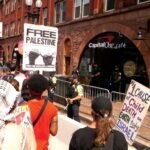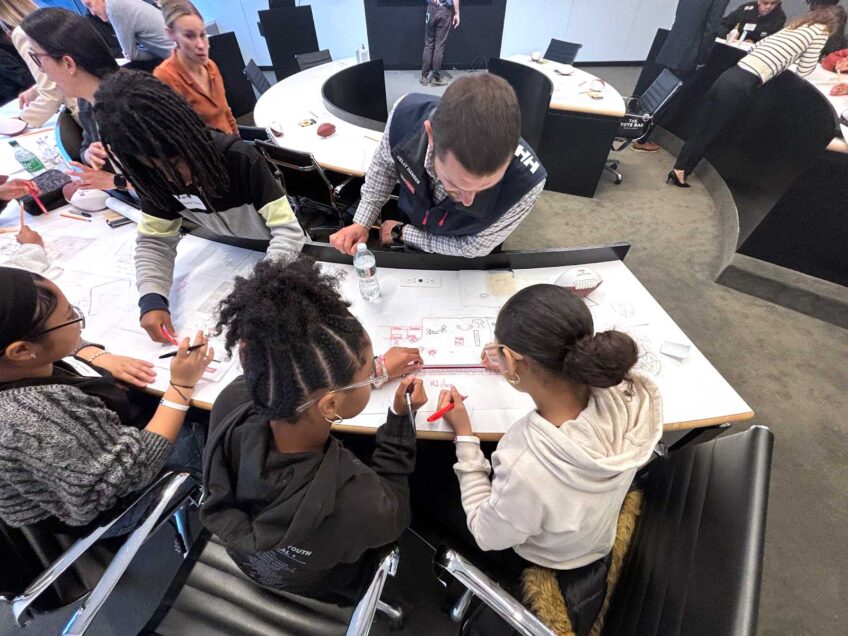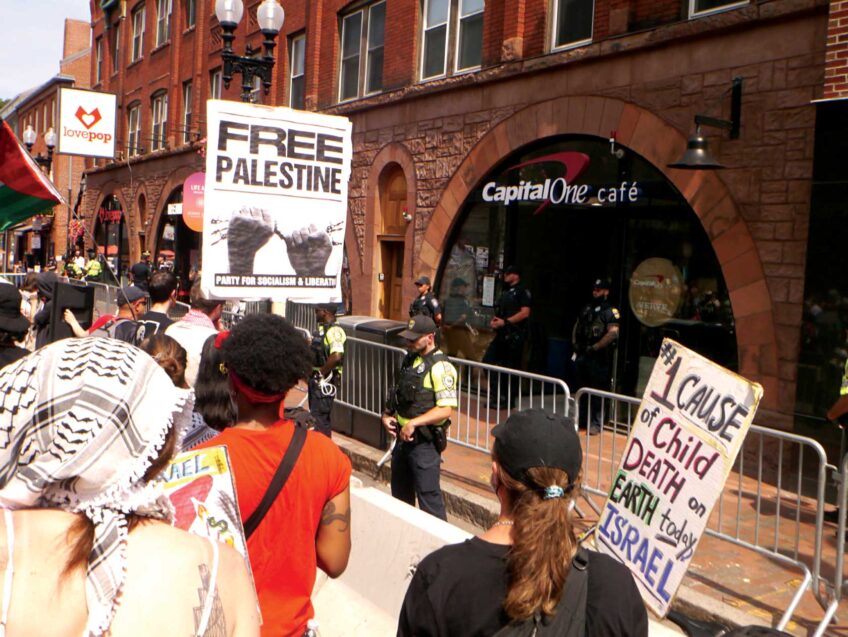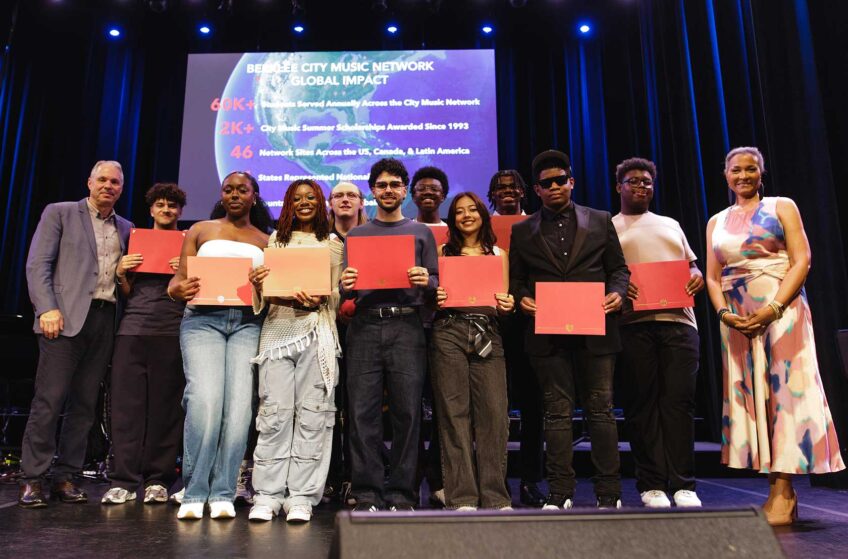
At turn of 20th century, Boston’s black businesses sought economic independence
About 200 African American-owned businesses existed in the city of Boston at the beginning of the 20th century.
Before providing a brief history of the most prominent of those proprietorships, a sketch of the city’s black demographics at that time is instructive. According to U.S. Census figures, from 1890 to 1920 Boston’s black population doubled, growing from 8,125 to 16,350. Half of the city’s African American residents were southern migrants.
This sudden influx of black people from the South aroused antipathy among white Bostonians. By 1895, laws rendered segregated public schools and racial discrimination in public places of accommodation illegal in Boston; laws prohibiting racial discrimination in employment, however, were nonexistent.
Although the vast majority of black Bostonians at the turn of the century were self-respecting, hard-working men and women, most found their employment options limited by race prejudice and a lack of education.
Consequently, about 70 percent of the city’s black residents were relegated to menial and common labor occupations such as servants, porters, laundresses, helpers in stores and unskilled laborers.
Approximately 18 percent of the city’s black population fell within the middle class, comprised mainly of waiters, Pullman porters, and artisans at the low end of the class, and business proprietors and professionals at the high end.
Boston’s black upper class, typically distinguished by superior education, was made up of attorneys, physicians, business proprietors, and literary and musical people. Notwithstanding the social and economic obstacles they had encountered, their accomplishments demonstrated that financial success was attainable.
By 1910, forty percent of the city’s black population, roughly 5,000 blacks, lived within the one and one quarter mile by one mile area by Northampton, Ruggles, Washington and Tremont Streets. By 1920, 7,319 African Americans, or about half of Boston’s black population, inhabited the South End/Lower Roxbury district.
Not only did most of the city’s black middle class reside in this community, but many of its African American business owners and professionals were its mainstay. Indeed, a significant number of Boston’s black-owned businesses were concentrated within the 700-900 block area of Tremont St. Black Bostonians of the period understood that their economic advancement, by necessity, depended chiefly upon the support of their own community — solely upon their own efforts and the cultivation of their own resources.
In 1900, 7.8 percent of Boston’s black men and 5.9 percent of its black women were professionals or engaged in business proprietorships — primarily personal service concerns requiring only small amounts of startup capital. While the vast majority of black business owners fell into the categories of retail merchants, restaurant owners and caterers, and boarding and lodging house keepers, others held a wide variety of occupations, ranging from pharmacists to newspaper publishers.
Grocery and Provision Stores
Jesse Goode headed the retail and wholesale grocery firm of Goode, Dunson and Henry — the largest black-owned grocery store in Boston at the time. Situated on Shawmut Avenue, through its wholesale department the store supplied many of the smaller black-owned grocery stores in the city. The firm’s holdings were valued at $73,000.
The Tropical Store, the second largest black-owned grocery and provision store in Boston, was located at 592 Shawmut Ave. near Lenox Street. It offered free delivery.
C. F. Brown and Sons sold groceries and provisions at its 25 Warwick St. location. Other black-owned grocery stores included the Church of God Grocery Store and those owned by Singleton and Company at 726 Shawmut Avenue and by B. W. Stark at 910 Tremont St.
Restaurants and Catering
At the turn of the century, there were plenty of black-owned restaurants, lunch rooms and catering concerns in Boston’s South End/Lower Roxbury district. At 894 Tremont St., Thomas E. Lucas owned the “cool, clean, and commodious” Southern Dining Room, where “good food and prompt, attentive service” made his establishment “a most desirable dining place for discriminating people.” Peter Gibson was the proprietor of Gibson’s Restaurant, located on the next block at 806 Tremont St. G. A. Sewell and R. H. Smith sold “first class” American and Chinese food at the corner of Windsor and Westminster Streets. Their business motto was “We Aim to Please.”
With locations at 154 Lenox St. and 147 Northampton St., White’s Lunch, owned by William H. White, served “strictly home cooking.” Proprietors John T. Counsel and Harry A. Simmonds provided “pure food” and “quick service” at the Boston Dairy Lunch, situated at 610 Shawmut Ave.
Caterer James H. Madison owned Tremont Soda Spa, which could be found at 946 Tremont St. The Benjamin Brothers were wholesale and retail manufacturers of “strictly pure ice cream and homemade candies.” Catering to parties and balls, their establishment could be found at 792 Tremont St.
Wig-Making and Hair Product Businesses
African Americans had established several Boston based wig making and hair product companies by the turn of the century. At the age of 23, Gilbert C. Harris moved from Virginia to Boston and secured work in a hair product store. Over a 14 period, he learned as much as he could about the business and launched a successful hair product enterprise on Washington Street with a capital outlay of 38 dollars. He supplied wigs to theatrical groups all over the country. One of the best wig makers of his time, Harris owned the largest wig manufacturing business in New England by 1910.
When asked what his formula for success was, he replied, “Follow the man who has succeeded, learn his traits, and you will be upon the right side.”
Around 1889, Madam L. C. Parrish established a wig making and hair weaving trade in Boston for black women. The L. C. Parrish Company manufactured scalp and hair products and also ran a beauty school.
In 1899, Madam Mary L. Johnson, a wig maker, “scientific scalp specialist, and hair culturist,” founded the Johnson Manufacturing Company with her husband, Dr. W. Alexander Johnson. At 798 Tremont St., they sold hair goods and toiletries at Johnson’s Hair Store. Sold all over the United States since 1900, their famous “Johnson Hair Food” was “the most scientific pomade yet discovered for growing, beautifying and softening the hair,” they claimed.
In connection with their hair product outfit, Madam Johnson and her spouse also operated Johnson’s School of Beauty Culture, where a variety of services including manicuring, shampooing, scalp massage, facial massage, hairdressing, and scalp treatment were offered. Its graduating class of 1915 consisted of seventeen young black women, each “engaged in their profession and doing well.” Mrs. K. A. Clark owned a hair dressing parlor at 730 Shawmut Ave., where she too sold Johnson Hair Food.
Two blocks from Johnson’s Hair Store at 989 Tremont St., T. J. Jones manufactured the famous Lusterine Hair Renewer and other “high grade human hair goods.” The eastern distributing agent for millionaire Madam C. J. Walker’s Wonderful Hair Grower, Charles W. Forster conducted the affairs of his business just around the corner at 108 Hammond St.
Madam E. Taylor also sold hair products such as Eureka Hair Vigor, Eureka Hair Lustre, and Eureka Hair Shampoo at her 136 St. Botolph St. location.
Attorneys
Roughly 25 black lawyers had practices in Boston around 1900. After graduating from Boston University Law School in 1894, Edgar P. Benjamin secured a “loan of 20 dollars, a desk, and a couple of chairs as office equipment,” and established his law practice in Boston. He eventually became sole counsel for many large firms, corporations, and business associations.
Attorney Benjamin resolved to give to each client his best work and his best judgment even if the latter meant dissuading the client from his desire to litigate. That resolve and his loyalty to his clients and the ethics of his profession were the secrets to his success.
Attorney David E. Crawford founded the Eureka Cooperative Bank in 1910. Set up at 930 Tremont St., it was the only bank in the east owned and operated by African Americans. He owned the Castle Building on Tremont St. as well, where he leased rooms to fraternal organizations on “reasonable terms.” By 1920, Attorney Crawford’s business concerns and commercial properties were valued at $150,000.
William Henry Lewis, an outstanding criminal lawyer in Boston, eventually became the first African American Assistant U.S. Attorney General in 1911. Other attorneys of the time included Harvard Law School graduate Clement G. Morgan, Edward Everett Brown, W. Alexander Cox, Lucius C. Hicks, Charles L. Raysor, William L. Reed, C. W. M. Williams, Jordan P. Williams, William J. Williams, Butler R. Wilson, James W. Wolff, and Hamilton S. Smith, who was a dentist as well.
Clothiers and Tailors
Located at 422 Massachusetts Ave., the proprietors of Sparrow and Company were “elite tailors” who furnished dress suits and tuxedos. Jeanette E. Brown operated a clothing business, specializing in “ladies’ tailoring” and making “artistic street and evening gowns” at 519 Columbus Ave.
John H. Lewis, a successful clothier known for his “bell trousers,” and W. S. Sparrow owned tailoring businesses on Washington St. L. J. Lynch performed tailoring, as well as the cleaning and repairing of clothing at 147 Lenox St. B. H. Hankinson was a tailor located at the corner of Camden and Tremont Streets. Bruce Anderson, the “Clothing Doctor,” performed “fine tailoring, cleaning, dying, pressing, and repairing” at 806 Tremont St.
Other Black-Owned Businesses
In the early-20th century, Basil F. Hutchins operated a funeral home equaled by few others. His business establishment was housed at 797-799 Tremont St., a large, elegant building equipped with a chapel and every modern convenience.
“In case of death anywhere, call upon us to arrange your affairs,” he advised.
Hutchins was also one of the leading black property owners of the time.
Benjamin F. Jones, another funeral undertaker located at 639 Shawmut Ave., arranged funerals for as low as $65. “We furnish funerals as low, if not lower, than any other undertaker in Boston,” he said.
There were three black-owned hotels in Boston in 1915: the Pitt, the Carlton, and the Hotel Melbourne, an elegantly furnished hotel managed by Reddick J. Royster and found at 829 Tremont St.
By 1915, photographers James and Dottin already had been in business for eighteen years. They had two studios on Tremont St., the Keystone Studio, situated at 830 Tremont St., and another found at 808 Tremont St. They advised, “Your patronage is respectfully solicited … When you are ready for your sitting we will send our automobile for you free.”
During this period, pool rooms and barber shops were hangout places for many of Boston’s black men. At 830 Tremont St., Joseph R. Keeble was proprietor of the Keystone Billiard Hall. He also owned the Keystone Annex Barber Shop next door at 832 Tremont St. On the next block at 971 Tremont St., John F. McIlvaine owned the New Hammond Pool Room.
Costa, Martin, and Carter were custom shoemakers located at 956 Tremont St. Elmer E. Poole, a jeweler and registered optometrist with an office right next door at 954 Tremont St., specialized in high grade prescription eye glasses and spectacles, repaired lenses, and provided free eye examinations as well.
Three black-owned printing businesses existed in Boston at the time. At 973 Tremont St., Arthur W. Lavalle owned a “fine book” and job printing company. The other two printers were William Grandison and Still and Still Printers.
John F. Ransom directed Ransom’s School of Music, found at 225 West Springfield St. Madam Lida Thomas Bright and Mrs. Estelle Ancrum Forster taught piano and organ at their studios, located at 795 Tremont St. and 108 Hammond St., respectively. Other well-known music teachers of the time included Roland W. Hayes, Fred P. White, Clarence C. White, and Mrs. Maud Cuney Hare.
D. M. Riddick, a real estate and insurance broker, maintained an office at 7 Water St. Cooper L. Saunders sold pianos at 146 Boylston St. W. P. Bond was a sign maker located at 34 St. Germain St. Henry C. Turner operated a large delivery business and owned a boarding stable and garage in Boston.
All of Boston’s African American-owned businesses that existed at the turn of the century are too numerous to discuss in one article. Finding their employment options limited, black Bostonians’ immediate and most vital concern was to earn a living. To that end, imbued with optimism, they developed self-reliance and a durable kind of cooperation rarely seen today. From retail merchants and manufacturers to doctors and lawyers, they could be found in substantial business and professional proprietorships throughout the South End/Lower Roxbury district.






